
views
Choosing a Piercer

Research piercing studios in your area. Check online or in the phonebook to find studios nearby. Make sure to include tattoo shops, since they usually offer piercing services as well. Ask friends and family for recommendations, referrals, and places to avoid. Make a list of all the studios you want to contact, including their phone numbers and addresses.
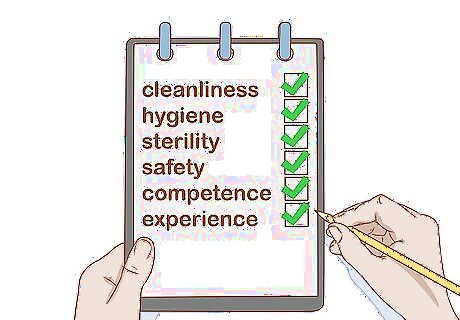
Create a checklist. Before choosing a studio and a piercer, make sure they meet all the criteria for cleanliness, hygiene, and sterility, as well as safety, competence, and experience. Some of this you’ll be able to figure out from their websites, but most of it you’ll have to find out by asking and visiting the studio. Make a chart or graph so that you can easily record information about each studio. Write down questions like: How do you ensure a sterile environment? Do you use an autoclave (a pressure chamber) to sterilize reusable equipment? Do you spore test regularly to ensure the autoclave is working properly? Do all your piercers have the necessary certifications and qualifications? These will vary depending on the area, but be aware that many places don’t have any sort of certification for piercers. Has your studio passed all necessary inspections and does it have all the necessary permits and licences? Again, this will vary depending on the location. You can call your local health department to find out about regulations specific to your area. Do you provide consultations? How much experience do your piercers have with industrials? How much do you charge for an industrial?

Call potential studios and make a shortlist. Have your list ready to ask questions, along with a way to take notes. Pay attention to the feeling you get from the people you talk to, and how comfortable they make you feel about the process. Cross off studios from your list if they avoided your questions, tried to rush you through, gave you an uneasy feeling, or provided answers that weren’t up to par. A good studio will take the time to answer your questions and walk you through the process. Keep only the top studios on the list based on the answers they gave and how they treated you.

Visit your top studios. Meet the staff, talk to the piercers, and make sure you feel comfortable with the people and the environment. Ask to see portfolios as well, and see if you can watch the piercers work. Make sure each studio is clean and that they do not allow smoking or drinking inside. Check that the studios use sterilized and individually wrapped needles, and that used needles are placed in a sharps container, which is a container for biohazardous materials. Be wary if a studio uses a piercing gun, since these cannot be sterilized and could indicate an unsanitary studio. Check to see if the piercers and tattooists use clean, reusable gloves with every client.

Select a studio. Using all the information you gathered and the studio visits, choose the studio you felt offered the best service, the most sterile environment, the friendliest staff, and the most talented artists. If you have the option to pick a specific piercer, consider who: Provided the best answers. Made you the most comfortable. Had the best portfolio and the most experience. Talked clients through the piercing process as it happened.
Preparing for Your Piercing
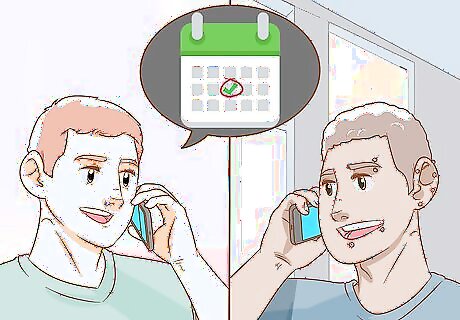
Book an appointment. Some studios require an appointment, but if they don’t it’s still a good idea to make one if you can, because good studios can get overrun with walk-ins. Discuss any allergies you might have and your jewelry options. Take notes about any instructions they provide for the day of your appointment. Consult with your physician before getting any piercing if you have any medical issues or concerns, or take regular medication.
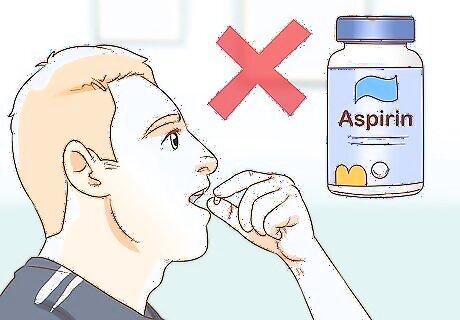
Prepare for your appointment. Follow any instructions the studio gave you when you booked your appointment. Eat at least four hours prior. Shower or bathe the day of your appointment. Tie your hair back and away from your ear if you have long hair, and bring some extra bobby pins or barrettes with you. Choose clothing that is loose and comfortable. Take photo identification to the studio. Arrive sober. Reputable studios will not pierce or tattoo anybody who’s under the influence of drugs or alcohol. Even alcohol in your system from the night before could cause excessive bleeding because it thins the blood. Avoid taking aspirin or other blood thinners before your appointment. Some tattoo and piercing studios are cash-only, so make sure you have enough cash on you to cover the cost of the piercing if they don’t take debit or credit.

Arrive a few minutes early for your appointment. This is just standard practice for any appointment. This will also give you time to ask any last-minute questions or prepare. When you arrive, tell them your name and that you have an appointment, or that you are there for an industrial piercing if you don’t have an appointment.
Getting Your Piercing
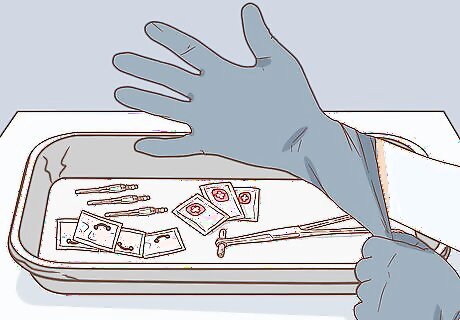
Watch the piercer prepare. The first thing the piercer should do is wash his or her hands, and then put on a new pair of single-use surgical gloves. All the equipment should be in sealed, individual packages, should be opened in front of you, and should then be placed on a tray. At this time, the piercer will also select the right jewelry to fit your ear and choose a needle with the proper gauge. Good piercers will walk you through every step of the process as they work. Ask questions if you have any. Ensure the piercer is using a bar that’s long enough to allow for swelling. Using a single bar is preferable because it guarantees the holes line up properly.
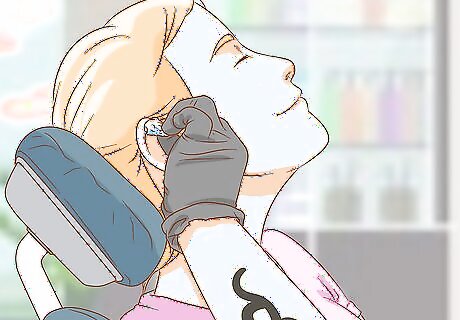
Let the piercer disinfect the piercing area. This will clean the area, decrease the risk of infection, and make it easier to pierce your ear.

Check the proposed location and angle of the industrial. Once your ear is disinfected, the piercer will mark the two piercing points with a marker and show you how they’ll line up. Don’t be afraid to ask the piercer to change the location or angle, because you can’t fix it afterward!
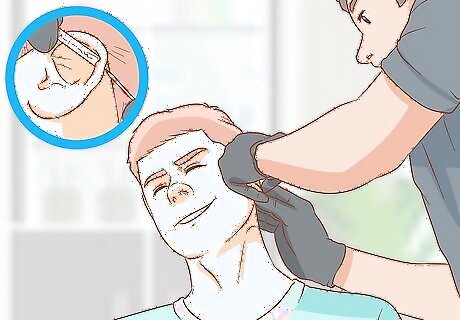
Relax as the piercer creates the first hole. The piercer will push a hollow, single-use needle through the skin to create the first hole. Once the needle is through, jewelry will be put in place immediately, and lined up to connect with the second hole. It’s important that you sit still and remain calm during the process, so try relaxation techniques like: Deep breathing. Visualization to distract you from the pain. Meditation. Talking to the piercer or someone nearby.
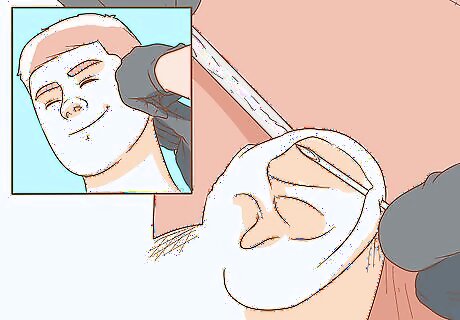
Remain calm and prepare for the second hole. Continue breathing deeply and practicing your relaxation techniques. The needle will go in first to create the second hole, and then the jewelry will be put in place.

Let the piercer clean and disinfect the area again. Once everything is over, expect some level of pain and a burning sensation. You’ve just had two piercings, so it’s completely normal to feel pain and burning at this time. If you haven’t already, discuss aftercare with your piercer before you leave.

Pay for your piercing. As with any service industry, most piercers will be more than happy to receive a tip, with 15 to 20 percent being standard. Make sure you pick up any forms or sheets they might have that outline the aftercare procedure.
Caring for Your Piercing
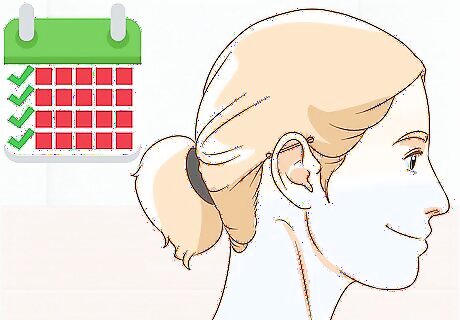
Be prepared for a long healing process. Industrials can be quite painful, and they often take longer to heal than other piercings. Generally, an industrial can take anywhere from three to four weeks, or upwards of six months to heal. Most over-the-counter pain medications will be sufficient to manage the pain you’ll feel in the first couple weeks. Avoid hot compresses. Instead, apply a cold cloth to the area to help relieve pain if necessary.
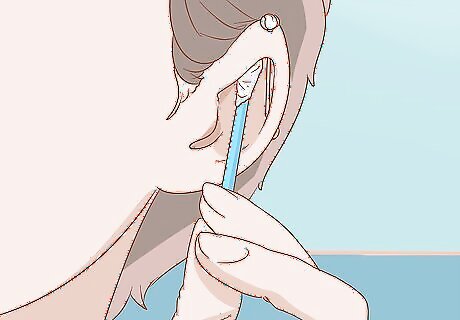
Clean your piercing regularly. The best way to clean your industrial is with a warm salt solution. The ratio is one-quarter teaspoon of sea or non-iodized salt to eight ounces of warm water. Soak the piercing by submerging it in the solution for seven to 10 minutes. Repeat this two to four times a day. Don’t clean your industrial with soap more than once or twice daily, and if you use soap, use something mild, liquid, and vegetable-based, such as castile soap.

Avoid rigorous activity. This includes sports and exercise, especially anything that involves physical contact. Do not change the jewelry until your industrial has healed, and don’t twist or rotate the jewelry. Avoid saunas, hot tubs, and pools. Industrials are very sensitive piercings, and can heal improperly if they are jostled, rubbed, or chafed. Keep long hair away from the industrial so that it doesn’t get tangled up with the piercing. Avoid sleeping on the piercing until it’s healed.

Avoid substances that could aggravate the piercing. Certain products can cause irritation, dryness, cell damage, and clogged pores. Don’t clean your piercing with: hydrogen peroxide, scented soaps, rubbing alcohol, antibacterial ointments, and petroleum-based creams or gels. Also avoid using premade ear-care solutions that contain any of those products. Make sure that items that come in contact with your piercing are clean as well, including your hair, fingers, clothes, and even your phone. Try to prevent your piercing from coming in contact with cosmetics and haircare products like shampoo, conditioner, hairspray, and makeup.

Address infections immediately. There’s about a 30 percent chance of infection with a cartilage piercing, and infections that aren’t addressed immediately can cause permanent damage. If you suspect an infection, seek medical attention immediately. Leave the jewelry in until you are told otherwise by a medical professional. Signs of infection include: Pus around the site of the piercing. Loss of feeling, a tingling sensation, or the surrounding skin turns pale. Excessive bleeding. Swelling, redness, pain, and throbbing. Fever.
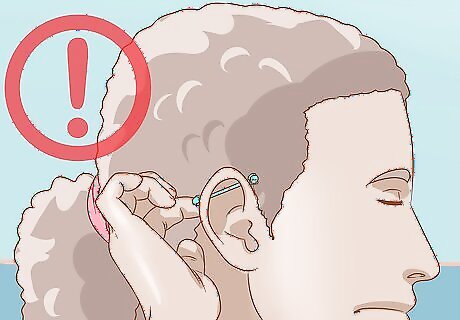
Watch for signs of an allergic reaction. Nickel allergies are quite common, and since body jewelry often contains nickel, watch for the symptoms. If you begin to exhibit signs of an allergy, go back to the piercer as soon as you can. Your piercing will not heal properly if you are allergic to the jewelry. Symptoms will generally appear within 12 to 48 hours after exposure, and can include: Itching and swelling. Redness, a rash, or dry patches of skin. Crusty or scaly blisters.




















Comments
0 comment